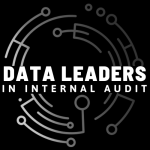
Measuring and Managing Customer Profitability
(June 11th, 2024 9AM NY time)
FREE TUESDAY WEBCLASS 9AM EST
The only value a company will ever create for its shareholders and owners is the value that comes from its customers – current ones and new ones acquired in the future. To remain competitive, companies must determine how to retain customers longer, grow them into bigger customers, make them more profitable, serve them more efficiently, and target acquiring more profitable customers.
Customers increasingly view suppliers’ products and standard service lines as commodities. This means that suppliers must shift their actions toward differentiating their services, offers, discounts, and deals to different types of existing customers to retain and grow them. Further, they should concentrate their marketing and sales efforts on acquiring new customers who have traits comparable to those of their relatively more profitable customers.
As a result of this shift from being product-centric to customer centric there needs to be an increased emphasis on measuring current and future potential profitability of products, standard service-lines, channels, and customers. (For business to consumer (B2C) industries, there is need to also consider applying of “customer lifetime value (CLV)” metrics.)
A mind-shift is needed from pursuing increased sales volume at any cost … to profitable sales volume. Cost accounting leveraging business analytics is essential to achieve this result. Organizations realize it is substantially more expensive to acquire new customers than to retain existing ones. This focus on customer retention combined with the recognition that spray-and-pray mass marketing of products and service-lines is being eclipsed by direct one-to-one to marketing with customers and prospects is causing the need for the marketing function to require financial data on customer profits and future value. Why? Because given any company’s scarce resources, it should attract its relatively more profitable customers rather than high maintenance ones whose substantial cost-to-serve erodes profit margins.
Which types of customers are worth more to retain, grow, acquire, or win-back? And types are not worth pursuing? And how much should you optimally spend on each type of customer micro-segment?
The Internet is irreversibly shifting power from sellers to buyers. Suppliers must react. Earning, not just buying, customer loyalty is now mandatory. A popular term in CRM circles is customer lifetime value (CLV) – measuring each customer as if they are an investment with an ROI. Is this another fad or a real need?
Meet Your Host
Welcome our special guest speaker: Gary Cokins – Founder and CEO: Analytics-Based Performance Management LLC; Expert in ABC, EPM/CPM, Profit Analysis, Budget, Analytics.

GARY COKINS
Gary Cokins is an internationally recognized expert, speaker, and author in advanced cost management and performance improvement systems. He is the founder of Analytics-Based Performance Management, an advisory firm located in Cary, North Carolina at www.garycokins.com . Gary received a BS degree with honors in Industrial Engineering/Operations Research from Cornell University in 1971. He received his MBA from Northwestern University’s Kellogg School of Management in 1974.
Gary began his career as a strategic planner with FMC’s Link-Belt Division and then served as Financial Controller and Operations Manager. In 1981 Gary began his management consulting career first with Deloitte consulting, and then in 1988 with KPMG consulting. In 1992 Gary headed the National Cost Management Consulting Services for Electronic Data Systems (EDS) now part of HP. From 1997 until 2012 Gary was in business development with SAS, a leading provider of enterprise performance management and business analytics and intelligence software.
His authored books are Performance Management: Finding the Missing Pieces to Close the Intelligence Gap (ISBN 0-471-57690-5); Performance Management: Integrating Strategy Execution, Methodologies, Risk, and Analytics (ISBN 978-0-470-44998-1); Activity-Based Cost Management – An Executive’s Guide (ISBN 0-471-44328-X); Predictive Business Analytics (ISBN 978-1-118-17556-9); and Supply Chain Costing and Performance Management (ISBN 978-1-119-79363-2). They are published by John Wiley & Sons.
CLAIRE WORLEDGE
Claire spent 10 years working for Deloitte, managing the data analytics team. In 2010, she created Aufinia. Aufinia has worked for 50 different companies that use SAP over the years.
Claire is a Certified Information Systems Auditor (CISA), Certified Fraud Examiner (CFE) and Certified ACL Data Analyst (ACDA). Aufinia is a global OEM partner with QLIK and also a Galvanize reseller partner for Vietnam and China. Claire has a Masters in IT from University College London, as well as a Bachelors in Biochemistry.
Claire is author of “Data Analytics Secret” Book
Learning Objectives
1. Why customers are the source of shareholder wealth creation.
2. Why as differentiation from product advantages is reduced or neutralized due to commoditization, then service level differentiation matters and the customer relationship grows in importance as a competitive advantage.
3. How to shift the mindset from growing sales to growing profitable sales and to view customers as investments like in a stock portfolio to seek higher ROIs – return on customers (ROC).
4. Why the marketing and sales functions need accounting data to better formulate customer account strategies including compensation incentives.
5. How to measure and manage product, channel, and customer profitability.
6. (This objective is optional to add to the presentation.) How measuring forward-looking customer lifetime value (CLV) differs from calculating historical customer / consumer profitability for B2C industries.
This webclass will cover:
• The six eras of management accounting including the shift from product and service-lines to a customer-centric one.
• The continuum of direct costing from project accounting to standard costing to activity-based costing (ABC).
• Basic concepts about activity-based costing (ABC).
• Why “cost-to-serve” expenses (e.g., distribution, marketing, selling, customer service) expenses are more important than product and service-line expenses.
• How to quickly design and implement a customer profitability measurement system in weeks, not months, using rapid prototyping.
• Actions taken with the information to make customers more profitable.
Key Take Away
To learn how calculate product, service line, distribution channel and customer profitability. Then actions that can be taken by the marketing and sales functions increase the profitability by focusing on the relatively more attractive customers to retain, grow, win back, and acquire.

Thanks For All The Amazing Content!
“Thanks for all the amazing content in the webclasses. We have learned quite a lot and this is helping the team to get going with SAP data analytics, as well as challenging our consulting vendors!”
Celia, Head of Internal Audit
What We Cover in Our Webclasses
During our Data Leaders In Internal Audit Tuesday Webclasses we are gaining insights on the following:
How do the Big 4 firms do data analytics?
What does the IIA, ISA, ACFE and ISACA say about data analytics?
What risks should be avoided when using data analytics in internal audit?
How can we train our auditors so that they can successfully use data analytics in their work?
What are the most obvious fraud schemes that data analysts need to be aware of?
What do “normal“ auditors and data analysts need to understand to make an efficient team?
Which data do you need to extract from SAP and how should it be interpreted?
How can we leverage data to see risks in the entity and better prepare the audit?